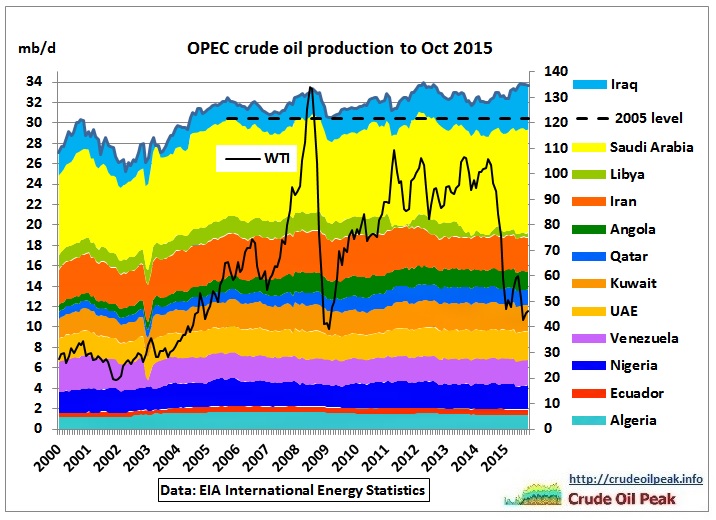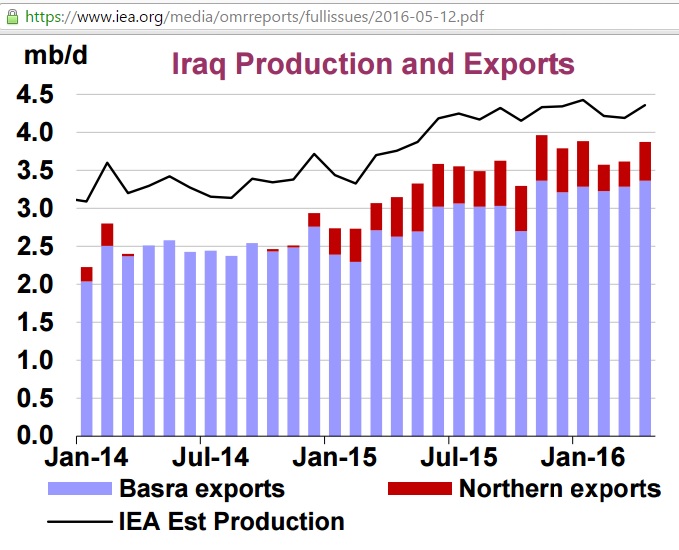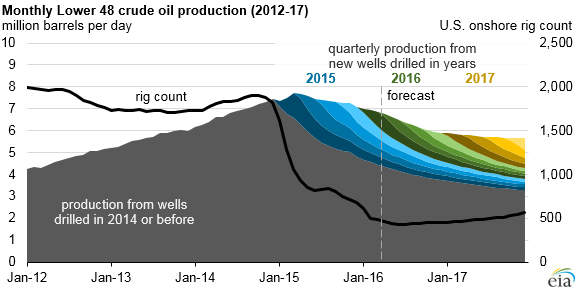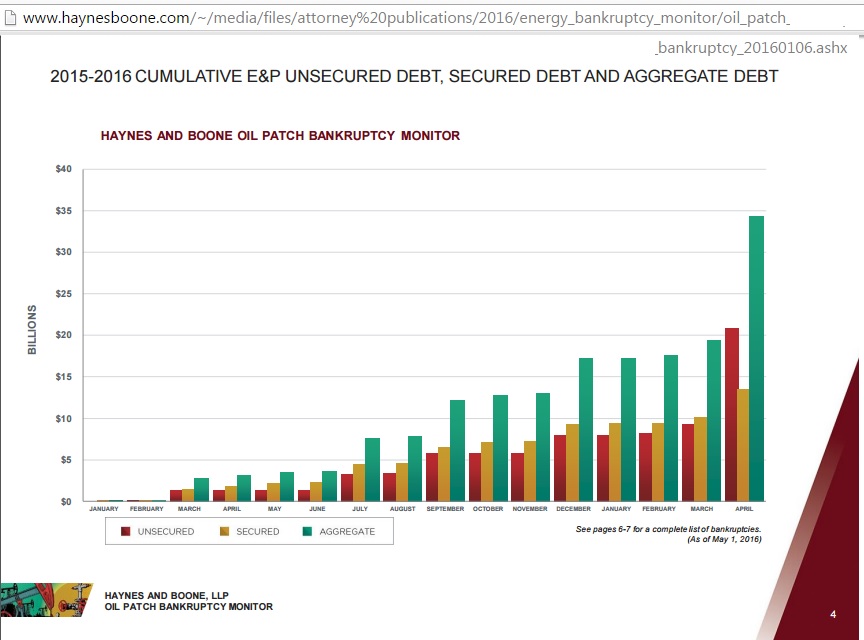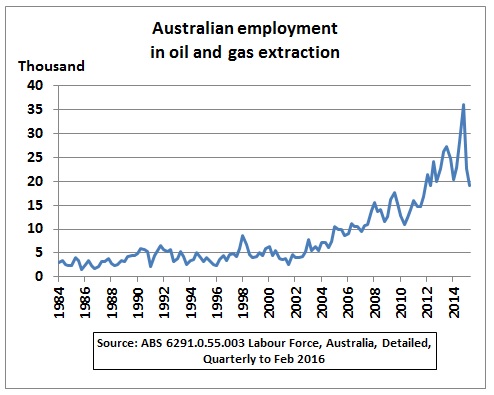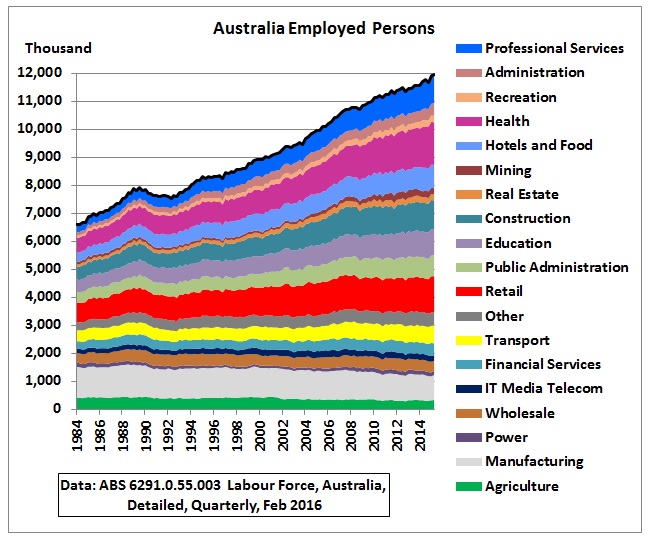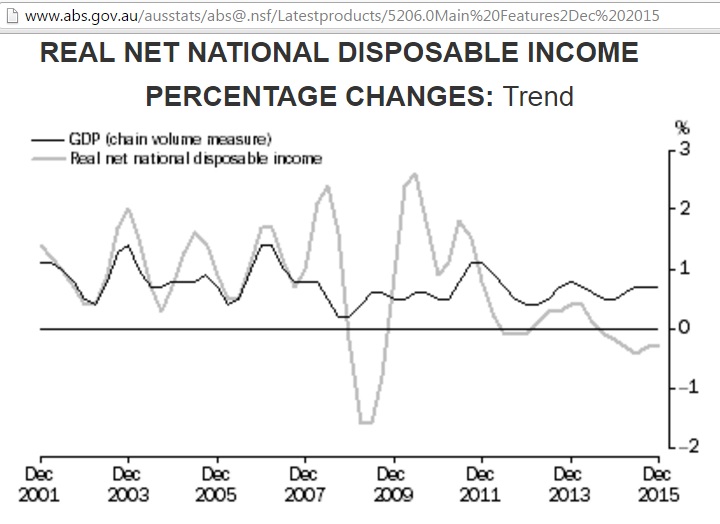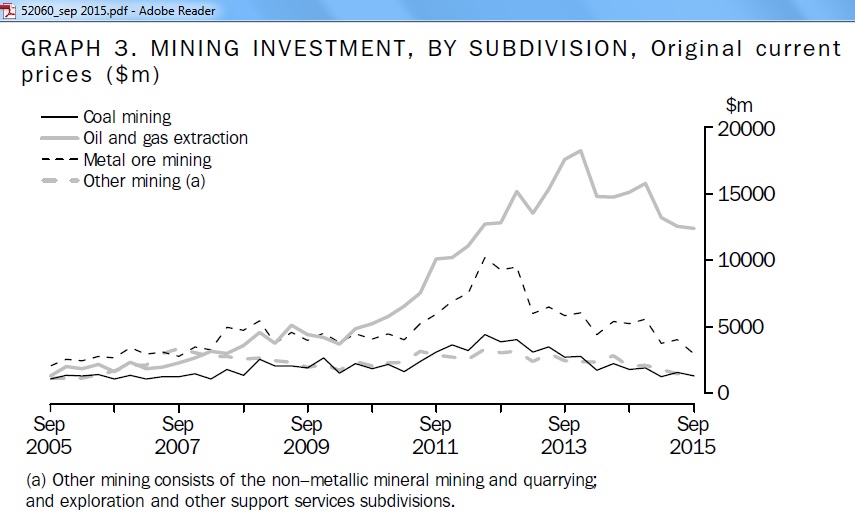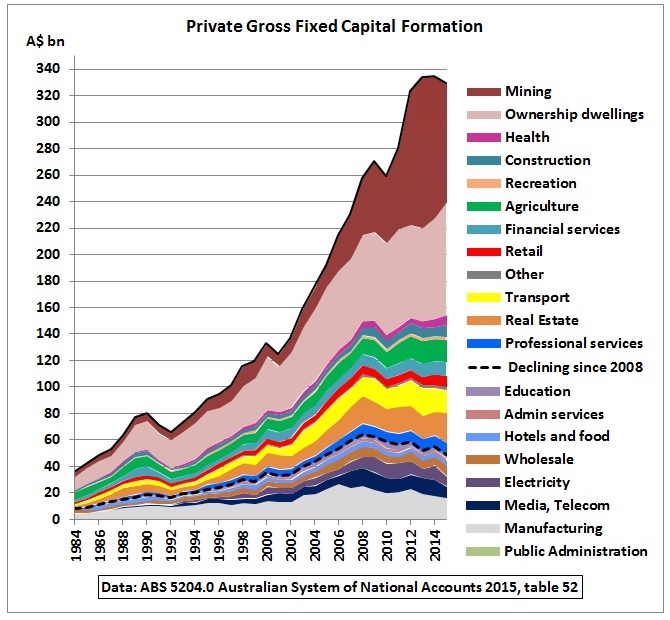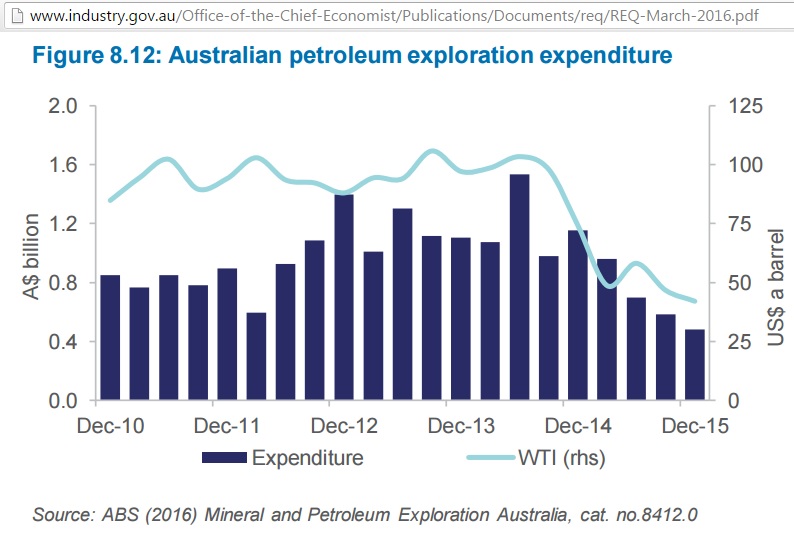Let’s see how the Budget 2016 deals with oil.
http://www.budget.gov.au/2016-17/content/
The most important statement on oil in budget paper 1is summarised in the chapter “Economic Outlook”
| Box 5 Lower oil prices to support economic growth (p 2-29)
The price of oil (Tapis crude) has fallen around 50 per cent in Australian dollar terms over the past two years. There have been significant developments in the supply of oil in recent years, including increased production by OPEC members…. |
Comment:Oh really? The latest monthly data available from the Energy Information Administration (EIA, US Department of Energy) going up to October 2015 don’t show any substantial increase in recent years. In fact OPEC without Iraq produced slightly less in 2015 than in September 2005. See the dashed line in this graph:
Fig 1: OPEC crude oil production Jan 2000 – October 2015
Data from here: https://www.eia.gov/cfapps/ipdbproject/IEDIndex3.cfm
Yes, Iraq finally increased production and exports by around 1 mb/d, 13 years after Bush’s invasion, supported by Australia’s John Howard – against the will of the population.
Fig 2: Iraq oil production and exports January 2014-April 2016
https://www.iea.org/media/omrreports/fullissues/2016-05-12.pdf
|
Box 5 ctd.: …..[increased production in] the US…
|
Comment: Yes, but US shale oil peaked already, not mentioned in the budget paper.
Fig 3: US crude production
Nor did the budget paper mention the bankruptcies now happening in North America. The graph below from Haynes & Boone shows growing debt of 69 oil and gas producers which have filed for bankruptcies since January 2015.
Fig 4: Debt January 2015-April 2016 involved in bankruptcies
HAYNES AND BOONE, LLP OIL PATCH BANKRUPTCY MONITOR May 1, 2016
|
Box 5 ctd.: …..and most recently by Iran following the recent lifting of sanctions.
|
Comment: ….. as shown in Fig 5. It is not clear, however, how much of Iran’s supply surge comes from offshore storage estimated to be between 30 and 50 million barrels as of January 2016. 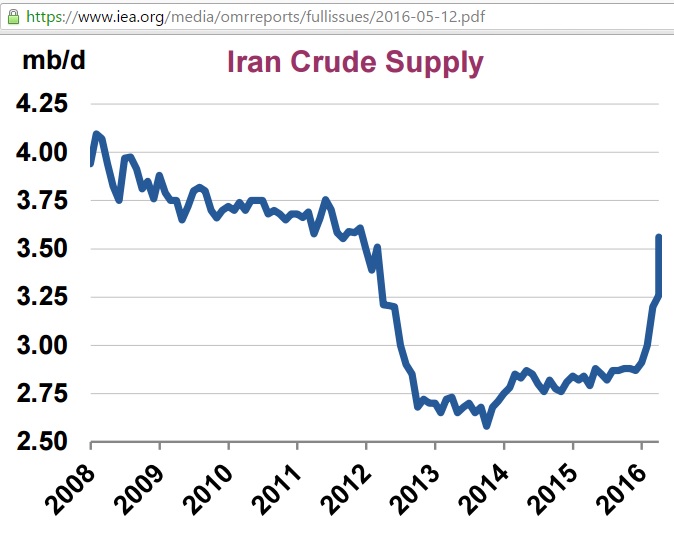
Fig 5: Iran’s oil supply after lifting of sanctions
https://www.iea.org/media/omrreports/fullissues/2016-05-12.pdf
It should be noted that the IEA’s monthly oil market report uses a proxy for Iran’s oil production calculated as exports plus domestic refinery runs. See this report on p22. So there are quite some uncertainties involved. Norwegian Rystad Energy estimated in February 2016 that Iran may not reach pre-sanction levels for some time: 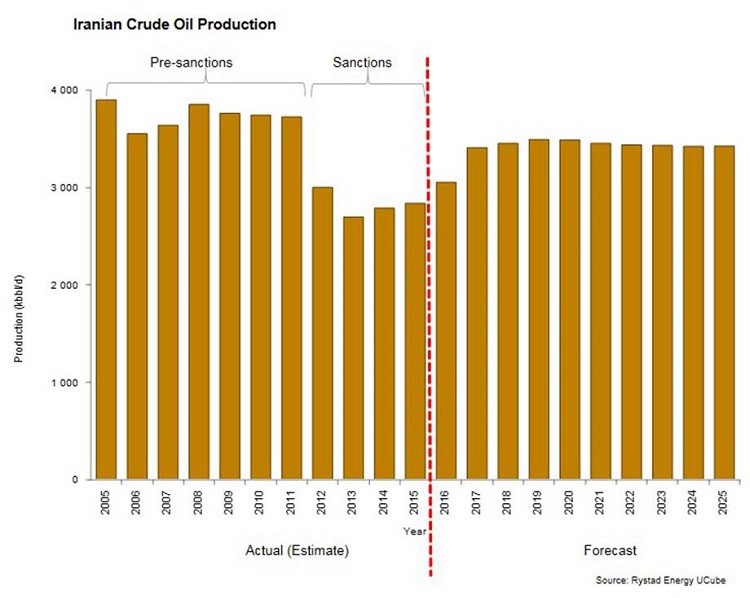
Fig 6: Rystad estimate of Iran’s production to 2025
A more optimistic outlook with growth mainly in condensate can be found in
Facts Global Energy report (December 2015)
After this short excursion into the budget’s limited capacity to grapple with the vagaries of oil supplies we continue with economic issues.
| Box 5 ctd.:Lower oil prices to support economic growth (p 2-29)
Slower than expected global growth has also contributed to demand for oil being lower than it otherwise would have been. Oil remains one of the major inputs into the global production process. For this reason, a sustained supply-driven fall in the price of oil in the past has supported global economic growth. During 2015, however, global growth does not appear to have responded as strongly as might have been expected based on historical experience. Factors likely to be muting the positive net impact of lower oil prices on global growth include cutbacks in public expenditure in oil producing nations, detracting from their economic growth; detraction from global economic growth from lower energy investment; and a smaller than expected increase in global private consumption, perhaps as consumers save part of the windfall from lower oil prices. |
Comment: This statement is correct but Treasury fails to do a quantitative analysis of these factors which would be very important to explain future economic growth rates assumed in the budget.
James Hamilton (University California) who first found that the “Great Recession” in the US which started end 2007 was caused by high oil prices did some recent research (11/4/2016) for the US, entitled “Why Low Oil Prices Haven’t Helped The Economy”, and found:
a) Energy expenses dropped from 5.4% to 3.7% of consumer spending
b) But consumers don’t spend the gains on other goods and services as they used to in the past
c) Any spending boom has vanished by now
d) Other factors holding back spending: slower income growth and precautionary saving
e) Spending on mining exploration, shafts and wells dropped by 0.5% of GDP
f) The shale oil production drop increases unemployment as the fracking boom goes into reverse
g) In principle, a net oil importer benefits from lower oil prices but “multiplier effects of displaced oil workers and capital in the oil sector could end up eating away at some of those net gains”
Hamilton sums up:
“….it means that aggregate consumption spending did get a boost from lower oil prices in the sense that we would have seen much more anaemic growth of spending had oil prices not come down so dramatically.”
http://oilprice.com/Energy/Energy-General/Why-Low-Oil-Prices-Havent-Helped-The-Economy.html
The Australian economy is of course different but we can look at some of the parameters mentioned by Hamilton.
Fig 7: Australian employment in oil and gas sector
Data are from here:
http://www.abs.gov.au/AUSSTATS/abs@.nsf/DetailsPage/6291.0.55.003Feb%202016?OpenDocument
We see that employment has become increasingly volatile in the last years. Several big LNG projects have been completed or are coming close to completion.
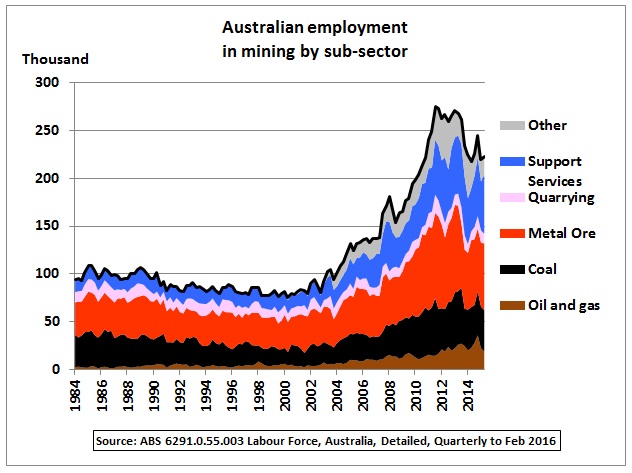
Fig 8: Mining employment by sector
Total mining employment peaked between May 2012 and November 2013 at around 270K and was down by 17% in February 2016. So that mining peak overwhelmed anything happening in oil and gas extraction which is only 12% of employment. Mining, in turn, is only around 2% of total employment as shown in the following graph:
Fig 9: Australia’s employment
Disposable Income And that brings us to a much bigger problem mentioned under (d) above, slower income growth. The Australian National Accounts (ABS Cat 5206.0) of December 2015 compares GDP growth with changes in net income:
Fig 10: GDP growth and income changes
(This measure adjusts the volume measure of GDP for the terms of trade effect, real net incomes from overseas and consumption of fixed capital)
ABS writes: “Through the year real net national disposable income fell 1.2% compared with an increase of 2.8% for GDP.” http://www.abs.gov.au/ausstats/abs@.nsf/Latestproducts/5206.0Main%20Features2Dec%202015
Fig 10 shows that the financial crisis in 2008/09 has changed everything and that this crisis is by no means over. Since around 2010 growth rates of real net national disposable income are in decline and went negative in 2014. The terms of trade increased from 60 index points in 2001 to 120 points in 2011 and have since declined to 80 points.
Mining investment
Fig 11: Mining investment. Graph is from:
http://www.ausstats.abs.gov.au/ausstats/meisubs.nsf/0/D9576EFAAF07E5B0CA257F0E00127C94/$File/52060_sep%202015.pdf Investments in oil and gas extraction peaked 2013/14 (later than iron ore and coal) and dominates mining investments.
Fig 12: Mining vs Non-Mining investments
Non-mining investments declined after 2008 but resumed growth in 2010, albeit at a much slower rate than before 2008. Another measure to compare sectors of the economy is gross fixed capital formation
Fig 13: Private gross fixed capital formation
http://www.abs.gov.au/AUSSTATS/abs@.nsf/DetailsPage/5204.02014-15?OpenDocument
In Fig 13, the sectors are stacked as follows: declining up to the dashed line and then growing sectors with the biggest 2 contributors on top. Excluding mining and dwellings fixed capital formation stayed flat since – you guessed it – the financial crisis in 2008. There is a danger that Australia is “transitioning” from one “bubble” to the next, from mining to housing.
Petroleum exploration
Fig 14: Quarterly petroleum exploration expenditure
The Resources and Energy Quarterly (March 2016) of the Department of Industry writes (Fig 14): “Low oil prices reduce investment and dampen prospects for future growth Expenditure on petroleum exploration and development continued to fall in the December quarter in line with lower oil prices and the global decline in upstream investment. Exploration and development expenditures totalled $482 million for the quarter, 60 per cent lower than the average for the two-year period prior to June 2014. Australian production will increase in the near term as additional output from committed projects comes online but will begin to contract towards the end of the outlook period. This contraction is likely to continue over the longer-term as a result of natural decline and the fall in upstream investment.”
http://www.industry.gov.au/Office-of-the-Chief-Economist/Publications/Documents/req/REQ-March-2016.pdf
Impact of lower energy investments
In January 2016 the World Economic Forum in Davos was warned about the impact of lower oil & gas investments on future oil prices. Details can be found in this post:
IEA in Davos warns of higher oil prices in a few years’ time
http://crudeoilpeak.info/iea-in-davos-2016-warns-of-higher-oil-prices-in-a-few-years-time
In February IEA’s Executive Director, Fatih Birol, came to Australia
Executive Director of the International Energy Agency welcomed to Canberra 9/2/2016 http://www.minister.industry.gov.au/ministers/frydenberg/media-releases/executive-director-international-energy-agency-welcomed-canberra
The media reported:
“Dr Birol conveyed an important and somewhat sober message that lower oil prices do not mean endless supply,” Mr Frydenberg said
8/2/2016
http://www.smh.com.au/business/energy/low-oil-prices-could-put-energy-security-at-risk-international-energy-agency-20160208-gmohf7.html
Yes, of course, but where has this wise statement entered the Budget 2016 which was being drafted at that time? We are closing this 1st part of the budget 2016 analysis with the latest investment report of Wood McKenzie Exploration: the life blood of global oil supply 27/4/2016 “Exploration over the last four years has been disappointing and gas prone. Since the 2014 oil price crash, there has been a sharp fall in wildcat drilling as companies focus expenditure on projects with more immediate returns and wait for prices to recover. For as long as prices are low, the landscape for exploration will be radically changed. We have conducted a comprehensive study of the impact of exploration on global oil supply by mining our database and analysing all conventional fields discovered since 2000. Over 7000 conventional fields have been discovered over this period and will be a critical element of future oil supply. Liquids discovered annually fell from 19 billion barrels between 2008 and 2011 to 8 billion barrels between 2012 and 2015. Only 2.9 billion barrels of liquids were discovered last year as the low oil price took its toll on exploration budgets and success with the drill-bit was elusive. 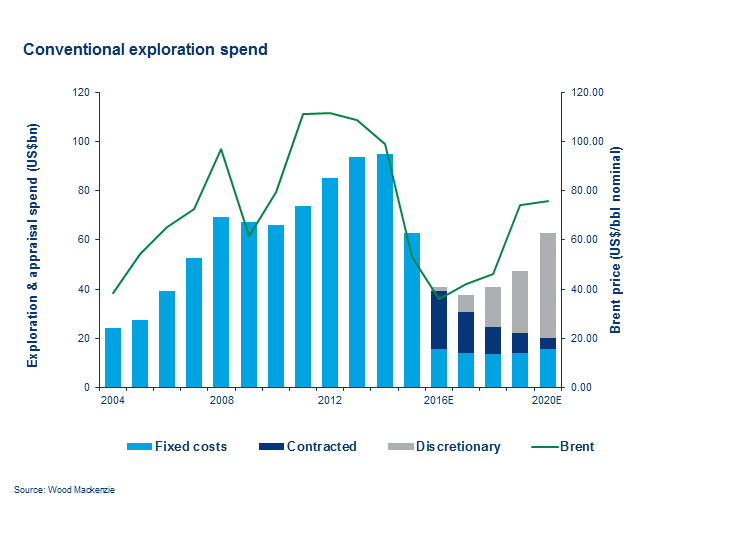
Fig 15: Conventional exploration spend
http://www.woodmac.com/analysis/Global-supply-if-exploration-results-do-not-improve
Conclusion (part 1): It is a huge progress that oil as a “major input into the global production process” is mentioned in Budget Paper 1 in Box 5 and not seen as just another commodity. However, some statements repeat media speculation instead of checking the numbers independently. But the most important deficiency so far is that no detailed, numerical analysis is done how current oil and gas trends will impact on the global and the local economy. Treasury could also improve by better consulting other departments having data on oil and gas or using industry reports. The RBA is also a good source as we will see in part 2. To be continued
